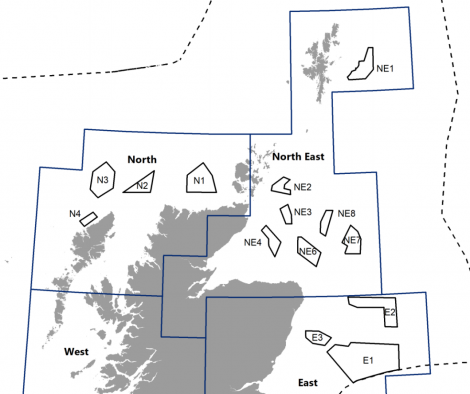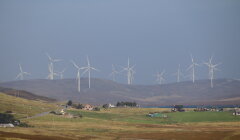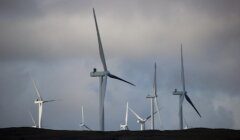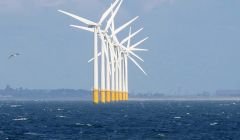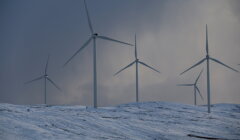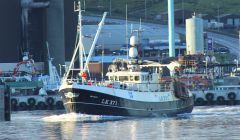Energy / Offshore wind farm to east of isles remains a possibility
POTENTIAL wind turbines located in the sea to the east of Shetland remains on the table after it was included in the Scottish Government’s final marine plan for offshore wind.
The plan was published today (Wednesday) alongside an offshore wind policy statement in which the government says it believes as much as 11GW of offshore wind capacity is possible in Scottish waters by 2030.
Earlier this year the government issued a draft plan highlighting areas where future offshore wind developments could potentially be sited, with one located to the east of Bressay offering a maximum output of 2GW.
In the final plan, that area has been amended to remove an area of overlap with the Shetland Islands’ works licensing regime.
This minor reduction – three per cent of the seabed area – is said to reduce the “potential administrative burden for all parties”.
This approach was agreed in consultation with Shetland Islands Council.
Overall the area to the east of Shetland, which is one of 15 across Scotland identified in the plan, covers 751 square kilometres.
The marine plan will provide the strategic framework for the first cycle of seabed leasing for commercial-scale offshore wind by Crown Estate Scotland.
It recommends that “developers engage with potentially impacted island communities as early as possible during the project development process” should areas be leased for offshore wind.
The plan says that for the area off Shetland there is “some potential for significant cost impacts associated with the loss of fishing grounds”.
In their response to a consultation on the draft marine plan earlier this year the Scottish Fishermen’s Federation and the Scottish White Fish Producers’ Association had suggested altering the coordinates of most of the proposed areas, including to the east of Shetland, to allow fishing and offshore wind farms to “co-exist”.
Become a member of Shetland News
Shetland Islands Council, meanwhile, said that the potential development of an offshore wind farm to the east of the isles would have a “significant positive impact” on the local economy.
In the Scottish Government’s offshore wind policy minister for energy, connectivity and the islands Paul Wheelhouse said turbines located at sea could play a “vital part” in helping the country meet climate change targets.
“Offshore wind is one of the lowest cost forms of electricity generation at scale, offering cheap, green electricity for consumers, with latest projects capable of generating power at below wholesale electricity prices,” he said.
“While the Scottish Government works tirelessly to protect lives and livelihoods amid the global health and economic crisis, the threat posed by climate change has not gone away, and we remain committed to tackling it and decarbonising our energy system and demand.
“Our starting point may have been affected by coronavirus but our ambitions have not and we are determined to drive a green economic recovery in which the potential of offshore wind is crystal clear.”
Crown Estate Scotland, which also owns and manages the seabed out to 12 nautical miles, said it welcomed the publication of the final marine plan for offshore wind.
“Our ability to harness Scotland’s huge potential for offshore wind is a vital part of the wider efforts to hit Scotland’s ambitious Net Zero targets, and help our communities tap into the economic prize on offer,” head of energy and infrastructure John Robertson said.
To date Scotland has 14 offshore wind farms (including two floating wind farms) with consent, six of which are currently operational.
Become a member of Shetland News
Shetland News is asking its readers to consider paying for membership to get additional perks:
- Removal of third-party ads;
- Bookmark posts to read later;
- Exclusive curated weekly newsletter;
- Hide membership messages;
- Comments open for discussion.
If you appreciate what we do and feel strongly about impartial local journalism, then please become a member of Shetland News by either making a single payment, or setting up a monthly, quarterly or yearly subscription.






